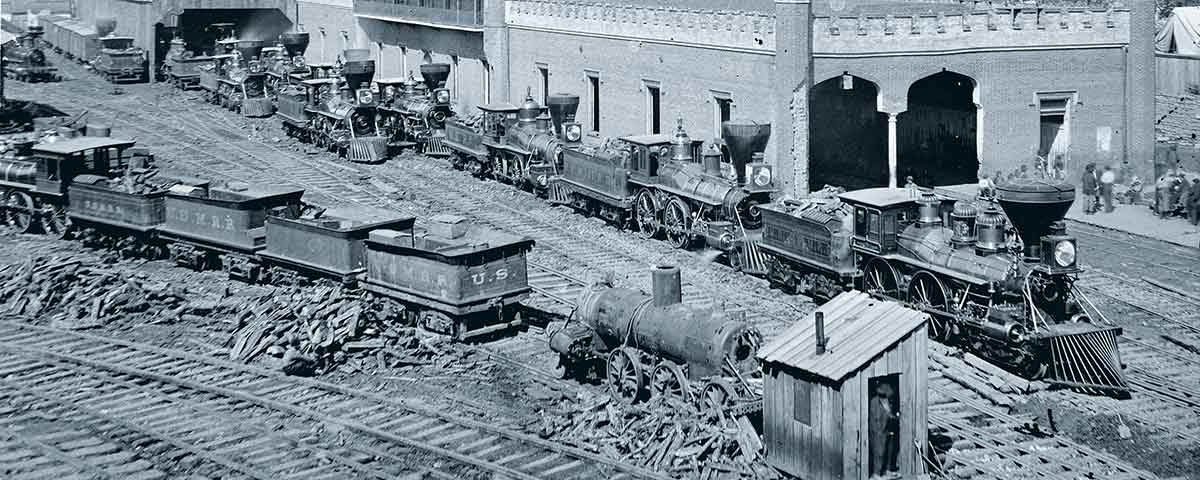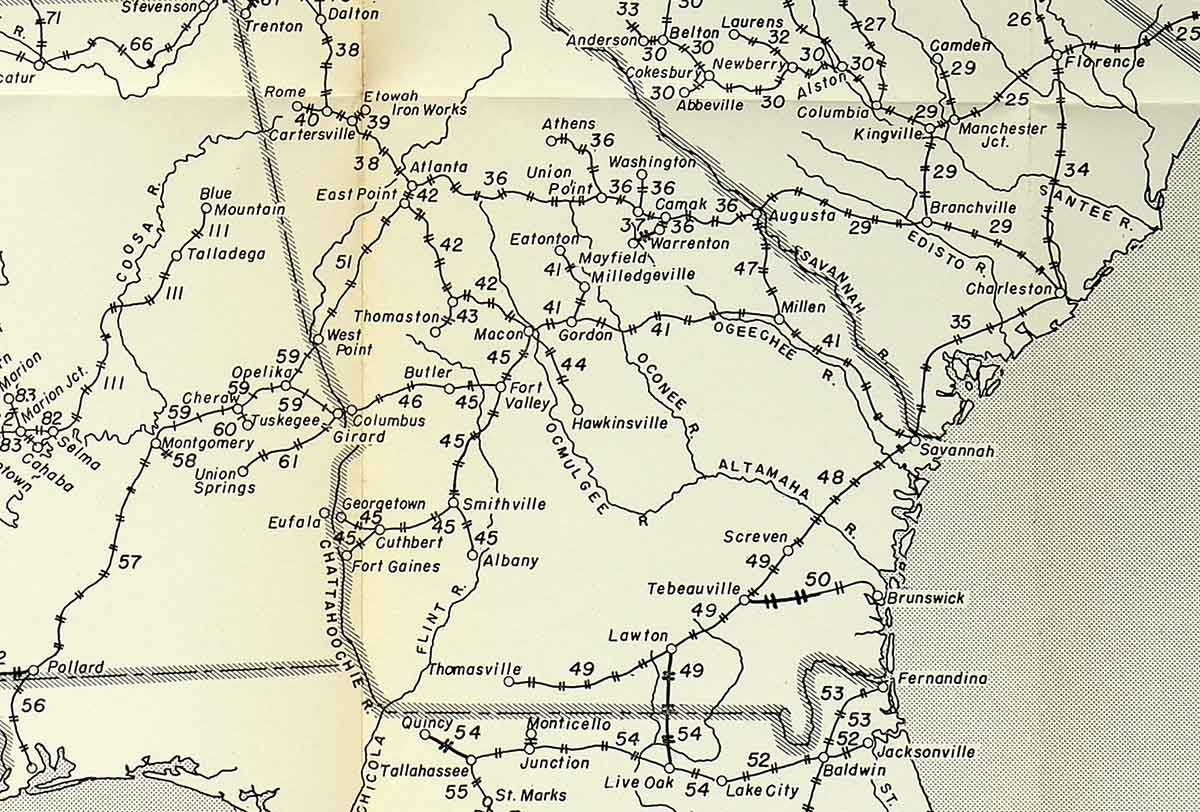The Confederacy failed to take advantage of railroad technology
[dropcap]O[/dropcap]n April 12, 1864, Robert E. Lee implored Secretary of War James A. Seddon to address the management of railroads in the Confederacy. Problems of supply plagued the Army of Northern Virginia, and Lee wanted all obstacles to deliveries removed. “I earnestly recommend that no private interests be allowed to interfere with the use of all the facilities for transportation that we possess,” he wrote, “until the wants of the army are provided for. The railroads should be at once devoted exclusively to this purpose, even should it be found necessary to suspend all private travel for business or pleasure upon them for the present.”
More than half-a-century later, historian Charles W. Ramsdell emphasized that the Confederacy never overcame the railroad-related troubles Lee had mentioned to Seddon. “It would be claiming too much to say that the failure to solve its railroad problem was the cause of the Confederacy’s downfall,” stated Ramsdell’s pioneering July 1917 article in The American Historical Review, “yet it is impossible not to conclude that the solution of that problem was one of the important conditions of success.” Ramsdell’s piece inspired no other scholar to produce a full-scale treatment of the subject, and in 1939 Douglas Southall Freeman’s The South to Posterity: An Introduction to the Writing of Confederate History listed “a study of the Southern railroads” as one of the topics deserving attention.
Robert C. Black III’s The Railroads of the Confederacy filled the glaring gap in the literature. Published by the University of North Carolina Press in 1952, and reprinted in paperback in 1998, it remains, after more than 65 years, a superior overview that has been augmented but never superseded. Modern readers will find a few anachronistic elements of the book. For example, Black subscribed in significant measure to Frank L. Owsley’s thesis in State Rights in the Confederacy (1925); namely, that John C. Calhoun’s “glorification of the individual state” carried over into the war and proved inimical to waging a successful defense against a powerful opponent.
Black also consistently used the term “War Between the States,” which Lost Cause writers embraced in the years after Appomattox, to describe conflict. Yet he largely succeeded in his determination “not to bring any preconceived notions to bear and to allow the politicians and soldiers and railroaders of the Confederacy to speak for themselves.”
[quote style=”boxed” float=”left”]Failure to build badly needed new lines hurt the Confederacy[/quote]
Black’s well-researched, comprehensive book expanded on many of the themes in Ramsdell’s article and cited substantial evidence to reach similar conclusions. Did Southern railroads figure prominently in the Confederacy’s failure to secure independence? “To this question the author can only answer—yes,” insisted Black: “Railroad transportation in the Confederacy suffered from a number of defects, all of which played a recognizable part in the southern defeat.”
Black explored how insufficient mileage, gaps between key lines, inability to repair and maintain tracks and rolling stock, differences of gauge, and the failure to build badly needed new lines all hurt the Confederacy. Beyond such physical difficulties, he argued, “the Confederates by no means made the best use of what they had. It is men who are most at fault when a war is lost—not locomotives, or cars, or even economic geography.” Numerous maps, including one in foldout format locating all the railroads and their gauges in June 1861, greatly enhanced the value of the text.
Black isolated two principal shortcomings that yielded pernicious results for the Confederacy. First, national needs went unmet because the railroads’ “owners, managers, and even employees were unwilling to make serious sacrifice of their personal interests.” In terms of the railroading sector Black found an absence of overriding national sentiment.
Second, Jefferson Davis’ administration and the Congress in Richmond proved “loath to enforce the kind of transportation policy the war effort demanded”—the kind Lee, a committed Confederate nationalist, urged to Seddon in April 1864. Overall, concluded Black, the South lacked the “wholehearted public cooperation” and the “government coercion” necessary “to wage a modern war.”
During the decades following its publication, The Railroads of the Confederacy enjoyed an elevated reputation. Noted bibliographer Richard B. Harwell placed it among his 200 essential titles on the Confederacy, one that demonstrated how the “collapse of the Confederate railroad service was of immense importance in hastening the breakdown of the Confederacy.”
In 1981, the editors of Civil War Times Illustrated included it on a roster of essential books compiled from “over thirty consultants.” More recently, a major analytical bibliography termed it “a soundly documented study” that details how “Confederate military authorities failed to use effectively the valuable interior railroad lines scattered throughout the South that were available to support numerous campaigns.”
Anyone who consults Black’s book will better appreciate accounts that discuss the Confederate rail system. Typical is artillerist Edward Porter Alexander’s handling of the frustrations James Longstreet’s First Corps experienced in traveling from Virginia to reinforce Braxton Bragg’s army in northern Georgia in September 1863. “In those days the Southern railroads were but lightly built & equipped,” explained Alexander, “&, now, for two years they had been cut off from all sorts of supplies of railroad material but what their own small shops could produce. Naturally, therefore, the movement of our corps…was very slow.” Alexander reckoned the “entire journey by rail had been about 852 miles in about 182 hours”—an average of just more than four and one-half miles an hour. Such a poor performance mattered in a conflict that, according to Black, “to its last weeks, remained a railroad war.” ✯






